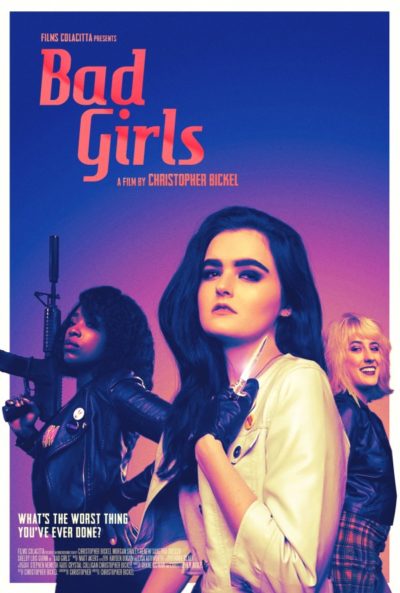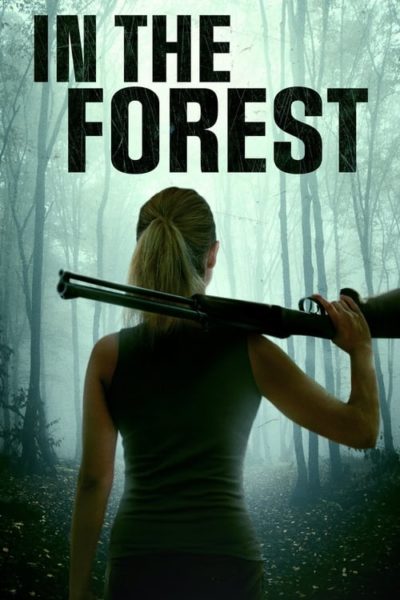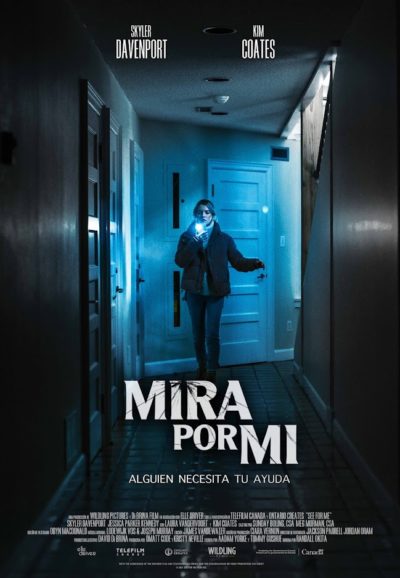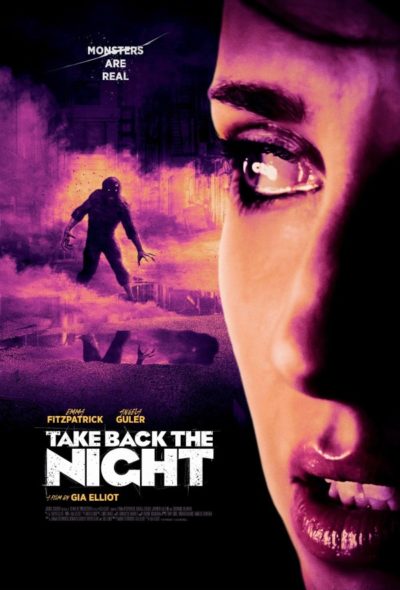★★½
“The Seven Schoolgirl Samurai”
 I have so many questions about the Japanese education system after watching this. It takes place in a high school whose student council is repeatedly being squeezed for extortion money by the Yagyu, a local biker gang. They ride up to the place, beating up and terrorizing the students, and generally making a nuisance of themselves. Where, exactly, is the principal when all this is going on? Teachers? Concerned parents? There is a throwaway line about how reporting things to the police would only make the gang attack harder. But you’d think some adult might notice and want to get involved? Mind you, outside of their chosen mode of transport, the gang themselves are largely indistinguishable from pupils, except for perhaps having slightly longer hair. Apparently in Japan, collar-length hair is like wearing a jacket with a Hell’s Angels patch.
I have so many questions about the Japanese education system after watching this. It takes place in a high school whose student council is repeatedly being squeezed for extortion money by the Yagyu, a local biker gang. They ride up to the place, beating up and terrorizing the students, and generally making a nuisance of themselves. Where, exactly, is the principal when all this is going on? Teachers? Concerned parents? There is a throwaway line about how reporting things to the police would only make the gang attack harder. But you’d think some adult might notice and want to get involved? Mind you, outside of their chosen mode of transport, the gang themselves are largely indistinguishable from pupils, except for perhaps having slightly longer hair. Apparently in Japan, collar-length hair is like wearing a jacket with a Hell’s Angels patch.
Fed up with all this, the council hire a yojimbo or bodyguard – explicitly referencing The Seven Samurai as they do so. To the council president’s surprise, this is Saeka Agawa (Usami), a bit of a delinquent herself. She recruits a number of her female friends, including a joshi pro wrestler and a stunt-woman. Under the guise of a “music club,” they train the pupils in the fine art of school self-defense, and successfully repel the Yagyu. However, the gang don’t take defeat easily, and this is where things get complicated, because it turns out that Saeka has previous history with Leopard (Ninagawa), the woman who runs them. They retaliate with a kidnapping, demanding both money and that Saeka stay out of their business, pushing the council’s resolve close to breaking point. However, Saeka insists they stay the course, setting the stage for a final battle, as both sides marshal all their resources into a winner-takes-all conflict. I should mention this includes the pupils driving around campus in a van converted to use both artillery and a flamethrower. Once again, where are the adults?
Sadly, it’s not nearly as much fun as the above scenario may sound. It’s the kind of thing which echoes the classic pinky violence scenarios. Yet despite what the poster may suggest, instead of being uncompromisingly for mature viewers, there’s hardly anything in here which would push it above a PG rating. That’s when you can see anything at all, with Nakamura being far too fond of backlighting and smoke for the film’s good, though he does manage a number of stylish shots. Also of note, both the dialogue and a canonically eighties pop song on the soundtrack echo the poster by saying “Go for break”, which annoyed me much more than it realistically should. At north of 105 minutes, it definitely drags at point, and few of the “samurai” beyond Saeka are given even the slightest bit of development. It’s the kind of film I’d love to see remade by someone like Takashi Miike or Sion Sono, who could bring out the undeniable potential, which this version mostly leaves on the table.
Dir: Genji Nakamura
Star: Yukari Usami, Kozue Saito, Yuki Ninagawa, Rikako Murakami
a.k.a. V Madonna: War





 I didn’t realize until this started, it was by the director of the (non-GWG)
I didn’t realize until this started, it was by the director of the (non-GWG)  Three generations of a family take a trip into the woods in their mobile home. There’s grandfather Stan (Ward), his somewhat neurotic daughter Helen (Ayer), whose life has been falling apart around her, and Helen’s teenage daughter, Emily (Spruell), for whom a weekend in a forest with old people is
Three generations of a family take a trip into the woods in their mobile home. There’s grandfather Stan (Ward), his somewhat neurotic daughter Helen (Ayer), whose life has been falling apart around her, and Helen’s teenage daughter, Emily (Spruell), for whom a weekend in a forest with old people is  I have always been intrigued by alternate histories. These are bits of speculative fiction, which are based on a “What if…?” premise. For example, what if Napoleon had won the Battle of Waterloo? Or what if John F. Kennedy’s assassination had failed? Creators speculate on the way the world might have changed, in ways big and small. I find such creations endlessly fascinating, giving me a strong suspicion that, at certain points, history teeters on a razor’s edge, where a seemingly insignificant event can have an impact far beyond its scale. Here, it’s a single person who changes the course of history. For what might have happened, had Joan of Arc turned up, not in medieval France, but in Russia, during the aftermath of the 1917 revolution?
I have always been intrigued by alternate histories. These are bits of speculative fiction, which are based on a “What if…?” premise. For example, what if Napoleon had won the Battle of Waterloo? Or what if John F. Kennedy’s assassination had failed? Creators speculate on the way the world might have changed, in ways big and small. I find such creations endlessly fascinating, giving me a strong suspicion that, at certain points, history teeters on a razor’s edge, where a seemingly insignificant event can have an impact far beyond its scale. Here, it’s a single person who changes the course of history. For what might have happened, had Joan of Arc turned up, not in medieval France, but in Russia, during the aftermath of the 1917 revolution? I guess this is, at its heart, about the quest for a treasure map that has been torn into two pieces. Though you could be forgiven for not really noticing, as most of the cast seem to forget about it for the bulk of the running time. The heroine is Shao Wa (Chi), whose father is killed by the Three Rats in their quest for the map. She ends up being punted off a cliff and presumed dead by them. Naturally – it’d be a short movie otherwise – she’s not as dead as they think. She’s rescued by the inevitable kung-fu master and his annoying sidekick, Lee Ta Fa (Hung), who nurse her back to health, and give her the skills necessary to beat the Three Rats.
I guess this is, at its heart, about the quest for a treasure map that has been torn into two pieces. Though you could be forgiven for not really noticing, as most of the cast seem to forget about it for the bulk of the running time. The heroine is Shao Wa (Chi), whose father is killed by the Three Rats in their quest for the map. She ends up being punted off a cliff and presumed dead by them. Naturally – it’d be a short movie otherwise – she’s not as dead as they think. She’s rescued by the inevitable kung-fu master and his annoying sidekick, Lee Ta Fa (Hung), who nurse her back to health, and give her the skills necessary to beat the Three Rats. Yeah, as the above might suggest, this owes a rather large debt to
Yeah, as the above might suggest, this owes a rather large debt to  Lou Farnt (Brayben) is stuck in her life, with a dead-end job, no apparent friends to speak of, and still living with her domineering mother (Ball). She seeks escape from one self-help guru after another, spending her money on their books, DVDs and audio-tapes, though with little or no apparent positive results. Then, she meets the unconventional Val Stone (Roe), who lives in a seaside caravan and promises to change Lou’s life forever. After some qualms, she agrees to depart with Lou, who does indeed deliver on her promise. For, as the title suggests, Val is a psychotic if smart killer, who is specifically targetting those same gurus. Either she regards them as a curse on humanity with their vapid schemes, or she simply wants to dispose of the competition.
Lou Farnt (Brayben) is stuck in her life, with a dead-end job, no apparent friends to speak of, and still living with her domineering mother (Ball). She seeks escape from one self-help guru after another, spending her money on their books, DVDs and audio-tapes, though with little or no apparent positive results. Then, she meets the unconventional Val Stone (Roe), who lives in a seaside caravan and promises to change Lou’s life forever. After some qualms, she agrees to depart with Lou, who does indeed deliver on her promise. For, as the title suggests, Val is a psychotic if smart killer, who is specifically targetting those same gurus. Either she regards them as a curse on humanity with their vapid schemes, or she simply wants to dispose of the competition. This is not exactly subtle in terms of its messaging, or the underling metaphor. But to be honest, I kinda respect that. I’d probably rather know what I’m in for, from the get-go, rather than experiencing a film which thinks it’s going to be “clever”, and pull a bait and switch. Here, even the title makes it obvious enough. The ‘monster’ here is sexual violence, and should you somehow make it through the film oblivious to that, you’ll get a set of crisis helplines before the end-credits role. However, it manages to do its job without becoming misanthropic, largely by having very few male speaking characters, and is adequately entertaining on its own merits, not letting the movie drown in the message.
This is not exactly subtle in terms of its messaging, or the underling metaphor. But to be honest, I kinda respect that. I’d probably rather know what I’m in for, from the get-go, rather than experiencing a film which thinks it’s going to be “clever”, and pull a bait and switch. Here, even the title makes it obvious enough. The ‘monster’ here is sexual violence, and should you somehow make it through the film oblivious to that, you’ll get a set of crisis helplines before the end-credits role. However, it manages to do its job without becoming misanthropic, largely by having very few male speaking characters, and is adequately entertaining on its own merits, not letting the movie drown in the message. The first eighty or so minutes of this are really good: powerful, committed and extremely angry film-making. And justifiably so, I would say. Unfortunately, the film runs for a hundred and seventeen minutes, and definitely goes off the rails towards the end. The gritty realism which was perhaps the movie’s strongest suit is replaced by odd fantasy sequences, such as the fugitive couple suddenly dressed, in the middle of a forest, as if they were attending a Victorian embassy ball. I’m not certain what the point of these elements, or the anachronistic pop songs were. I am certain that they didn’t enhance my appreciation of the film in any way, and that’s a shame, considering how assured it had been in the early going.
The first eighty or so minutes of this are really good: powerful, committed and extremely angry film-making. And justifiably so, I would say. Unfortunately, the film runs for a hundred and seventeen minutes, and definitely goes off the rails towards the end. The gritty realism which was perhaps the movie’s strongest suit is replaced by odd fantasy sequences, such as the fugitive couple suddenly dressed, in the middle of a forest, as if they were attending a Victorian embassy ball. I’m not certain what the point of these elements, or the anachronistic pop songs were. I am certain that they didn’t enhance my appreciation of the film in any way, and that’s a shame, considering how assured it had been in the early going. 30 years old, Willa sees herself as an “old maid.” She’s the eldest of three half-sisters, daughters of peripatetic ne’er-do-well Finn Malone, who outlived two wives (and was deserted by a third) in the course of his wanderings, which in 1889 led him to a homestead in the small community of Sweet Clover. Like many of the townsfolk, he was heavily in debt to conniving banker Theodore Pierce, and used his land as collateral. But he’s now recently dead, murdered after he took off on his latest quest for gold. At the moment, the farm isn’t productive; without him, the sisters won’t be able to repay the loan, and they’ll lose their home within months.
30 years old, Willa sees herself as an “old maid.” She’s the eldest of three half-sisters, daughters of peripatetic ne’er-do-well Finn Malone, who outlived two wives (and was deserted by a third) in the course of his wanderings, which in 1889 led him to a homestead in the small community of Sweet Clover. Like many of the townsfolk, he was heavily in debt to conniving banker Theodore Pierce, and used his land as collateral. But he’s now recently dead, murdered after he took off on his latest quest for gold. At the moment, the farm isn’t productive; without him, the sisters won’t be able to repay the loan, and they’ll lose their home within months.